Storygram: Natalie Wolchover’s Vision of Future Physics
The Storygram series, in which professional writers annotate award-winning stories to illuminate what makes a great science story great, is a joint project of The Open Notebook and the Council for the Advancement of Science Writing. It is supported by a grant from the Gordon and Betty Moore Foundation.
Natalie Wolchover is a physics writer based in New York City. She won the Evert Clark/Seth Payne award for young science journalists in 2016 for the following story. This annotation was done by George Musser and is co-published at The Open Notebook.
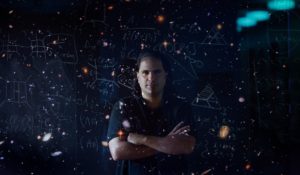
Get Nima Arkani-Hamed going on the subject of the universe — not difficult — and he’ll talk for as many minutes or hours as it takes to transport you to the edge of human understanding, and then he’ll talk you past the edge, beyond Einstein, beyond space-time and quantum mechanics and all those tired tropes of 20th-century physics, to a spectacular new vision of how everything works. It will seem so simple, so lucid. He’ll remind you that, in 2015, it’s still speculative. But he’s convinced that, someday, the vision will come true.
On the strength of the torrent of ideas he has produced over the past 20 years — he won the inaugural $3 million Fundamental Physics Prize in 2012 “for original approaches to outstanding problems in particle physics, including the proposal of large extra dimensions, new theories for the Higgs boson, novel realizations of supersymmetry, theories for dark matter, and the exploration of new mathematical structures in gauge theory scattering amplitudes”— Arkani-Hamed, 43, a professor at the Institute for Advanced Study (IAS) in Princeton, N.J., is widely considered one of the best theoretical physicists working today. Colleagues point to his knack for simplifying impossibly complex problems, as well as his exceptional mathematical ability, creativity, instincts and vast knowledge of physics. “Nima is amazing in every component of talent space,” said Savas Dimopoulos, a theoretical particle physicist at Stanford University.
But while many top physicists shy away from stagecraft, Arkani-Hamed functions, colleagues say, as a “messiah,” a “Pied Piper,” an “impresario.” Arms in motion and dark hair spilling to his shoulders, he weaves together calculations, thought experiments and historical precedents into narratives, confidently outlining chapters to come. His listeners range from graduate students to Nobel Prize winners. “He keeps coming up with the goods, and his persuasiveness is hypnotic,” said Raman Sundrum, a theoretical physicist at the University of Maryland in College Park, “so a lot of people follow where he leads.”
Arkani-Hamed’s mission — simple to state, but so all-consuming that he barely sleeps — is to understand the universe. “I don’t feel I have any time to lollygag, at all,” he said this summer in Princeton. This obsession takes him in several directions, but in recent years one question about the universe has come to preoccupy him, along with the field as a whole. Particle physicists seek to know whether the properties of the universe are inevitable, predictable, “natural,” as they say, locking together into a sensible pattern, or whether the universe is extremely unnatural, a peculiar permutation among countless other, more mundane possibilities, observed for no other reason than that its special conditions allow life to arise. A natural universe is, in principle, a knowable one. But if the universe is unnatural and fine-tuned for life, the lucky outcome of a cosmic roulette wheel, then it stands to reason that a vast and diverse “multiverse” of universes must exist beyond our reach — the lifeless products of less serendipitous spins. This multiverse renders our universe impossible to fully understand on its own terms.
As things stand, the known elementary particles, codified in a 40-year-old set of equations called the “Standard Model,” lack a sensible pattern and seem astonishingly fine-tuned for life. Arkani-Hamed and other particle physicists, guided by their belief in naturalness, have spent decades devising clever ways to fit the Standard Model into a larger, natural pattern. But time and again, ever-more-powerful particle colliders have failed to turn up proof of their proposals in the form of new particles and phenomena, increasingly pointing toward the bleak and radical prospect that naturalness is dead.
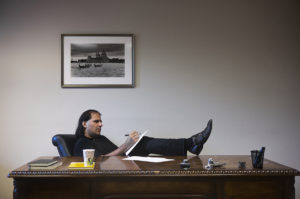
Still, many physicists, Arkani-Hamed chief among them, seek a more definitive answer. And right now, his quest to answer the naturalness question leads through China. Two years ago, he agreed to become the inaugural director of the new Center for Future High Energy Physics in Beijing. He has since visited China 18 times, campaigning for the construction of a machine of unprecedented scale: a circular particle collider up to 60 miles in circumference, or nearly four times as big around as Europe’s Large Hadron Collider (LHC). Nicknamed the “Great Collider,” and estimated to cost roughly $10 billion over 30 years, it would succeed the LHC as the new center of the physics universe. According to Arkani-Hamed and those who agree with him, this 100-trillion-electron-volt (TeV) collider would slam subatomic particles together hard enough to either find the particles that the LHC could not muster or rule them out, rescuing or killing the naturalness principle and propelling physicists toward one of two radically different pictures: that of a knowable universe, or an unknowable multiverse.
The Chinese collider campaign has the support and involvement of many prominent researchers aside from Arkani-Hamed, including Yifang Wang, the Nobel Prize winner David Gross, and the Fields medalist S.T. Yau, as well as legions of experimentalists and engineers working behind the scenes, yet the project is controversial. Experts disagree about what the machine would achieve. They also wonder if China is ready to take the helm in particle physics, questioning whether its small particle physics community can grow quickly enough over the next two decades to run a project so enormous and complex, even with the help of thousands of physicists in Europe and the United States. As Tao Han, a particle physicist who supports the campaign, expressed the concerns of some of his Chinese colleagues, “Are we going to jump too far and fall hard?”
Now it is decision time. The Chinese government will release its five-year budgetary plan by the end of the year, revealing whether it plans to invest in research and development for the collider project.
“This 100-TeV collider program in China is brilliant; it’s challenging; it’s risky. And that’s precisely why nothing like this, I think, could really have had as much traction without Nima,” said Sundrum, who has visited Beijing to aid the campaign. “It has taken enormous persuasion for him to take this from a total fantasy, a losing fantasy, to something which has a fighting chance.”
Park and Go
To Arkani-Hamed, the Chinese collider campaign feels like pushing an open door. “When you think about it more, it’s just perfect,” he said, sipping Coke Zero on his office couch. “It would be great for physics; it would be great for China. They’re looking for something where they can just be the best in the world.” He continued, “There are very few things in life where what you want to do for idealistic reasons and what someone else wants to do for Machiavellian reasons are identical. And when that happens, you should just do it. You should just do it!”
June sunlight poured onto chalk-speckled blackboards and a magnificent antique desk. Arkani-Hamed sat beneath a framed photo of a male leopard, taken by his partner, a biologist, when he went with her on safari two years ago in South Africa. Sporting his usual black T-shirt, cargo shorts and sandals, with arms covered in cat scratches — the tough love of a worshipped tabby — he leapt up to erase a patch of speckles and chalk out a new mathematical argument, and then sprang up again to hug a visiting researcher who politely peeked in from the hallway. At lunch, surrounded by protégés, he scrawled theories on napkins, defending some, explaining others, and chugged more Coke Zero. (His caffeine intake peaked several years ago at 15 to 16 espresso shots per day.)
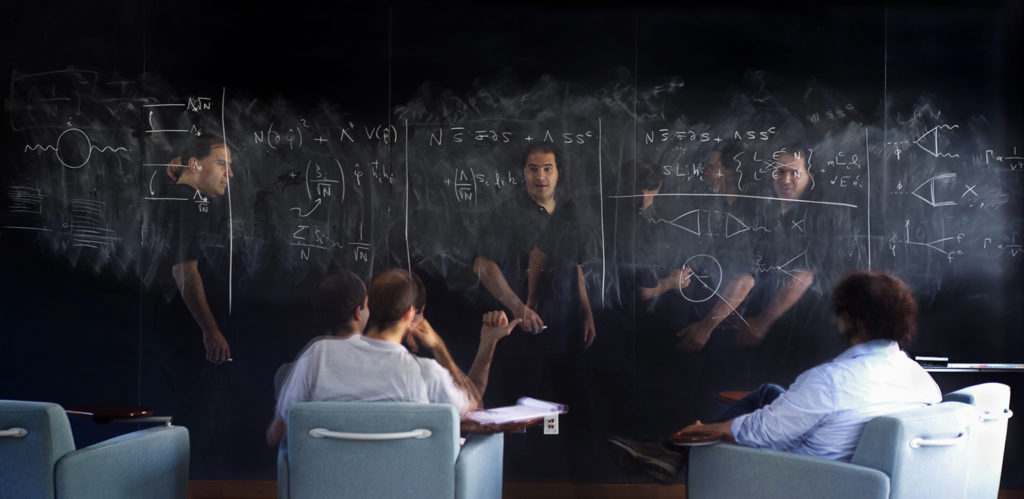
Nima Arkani-Hamed with collaborators Raffaele Tito d’Agnolo (seated at left) and David Pinner at the Institute for Advanced Study in Princeton, N.J. Courtesy of Béatrice de Géa. (Originally published in Quanta Magazine.)
Generous with his time, even with a young man hanging out in the hallway whom he half-jokingly described as his “stalker,” Arkani-Hamed claims never to have turned down a graduate student who wanted to work with him. Many from his flock have gone on to join the faculties of top research universities and are now leaders in their generation. “Being Nima’s student was like having Usain Bolt as a track coach,” said Clifford Cheung of the California Institute of Technology in Pasadena, who studied under Arkani-Hamed at Harvard University. Jesse Thaler of the Massachusetts Institute of Technology described spending nearly every day in Arkani-Hamed’s bustling Harvard office, in laughter-filled bull sessions and “nerve-racking caffeine-driven interrogation.” Thaler added: “If I look at the high points of my physics career thus far, many of them occurred because I (consciously or not) tried to follow Nima’s example: pursuing one’s own ideas with unbridled enthusiasm, politely disregarding naysayers and tackling obstacles head-on. And drinking espresso.”
Arkani-Hamed has been a disruptive force throughout his career. He started making a name for himself in graduate school, in the mid-1990s, at the University of California, Berkeley. When he pointed out a mistake in a pre-print by Dimopoulos, a prominent researcher two decades his senior, his adviser suggested that Dimopoulos might want to return from a sabbatical in Europe to work with Arkani-Hamed, who was to become a postdoctoral researcher at Stanford’s SLAC National Accelerator Laboratory. “How lame,” Dimopoulos recalled thinking. “Why would I let a postdoc decide my future?” In the end, he did return, and he and Arkani-Hamed became close friends and collaborators. “We had an extremely productive time together and a good time,” Dimopoulos said. “He is one of my very best friends in my life.” Their biggest collaboration rounded out the Standard Model with the hypothetical effects of extra spatial dimensions curled up at each point in our three-dimensional reality.
As Arkani-Hamed spawned one new research area after another, he resisted real-world distractions, like parking rules. As a young professor at Berkeley, he insisted on parking in the mostly empty lot near his building rather than the faraway space assigned to him, leading to an epic war with a parking attendant that landed his face on a “Wanted” poster and helped drive him from Berkeley to Harvard. There, his parking troubles eased somewhat (though his car was regularly towed to a nearby lot), and his career flourished. He “made the whole place come alive,” said Melissa Franklin, a Harvard physicist. When, in 2008, he left for the IAS, seeking its “purity of purpose” and freedom from teaching duties, his parking problems ended, but “we cried,” said Franklin. “We wept.”
The tranquility of the IAS, where great thinkers like Albert Einstein and Kurt Gödel finished their careers, hasn’t slowed Arkani-Hamed’s ambitions. Now, on top of a continued outpouring of new ideas, his days and nights are filled with flights and meetings in pursuit of his dream collider. Much later that June day, after dropping an intellectually exhausted reporter off at the train station, Arkani-Hamed drove to Newark to catch a working redeye flight to Hong Kong, where he would speak at a conference before boarding another flight to Beijing to meet with Chinese colleagues and guide research for the collider project. “I sleep the way lions eat,” he explained — “very little for stretches of time, punctuated by huge and delicious feasts.”
Escape to the Stars
Arkani-Hamed’s mother, Hamideh Alasti, believes her son’s drive to understand the world once saved his life. He was born in Houston, where his father, Jafar, worked for the Apollo program analyzing physical properties of the moon. (Arkani-Hamed’s mother and his sister, Sanaz “Sunny” Jensen, are also physicists.) As the family bounced between academic jobs in Iran and the U.S., young Nima absorbed books like Tell Me Why, by Arkady Leokum, and enjoyed hands-on scientific investigations like catching and raising frogs, snakes and salamanders and studying their behavior. “He really didn’t care about material life,” Alasti said. “If you wanted him to put a nicer shirt on, he didn’t want that.” His father added, “I used to take Nima hiking almost every weekend in Tehran. He was very stubborn. I remember once he hiked about 11 hours at the age of about 4. I asked him to come onto my shoulder and he refused.”

In 1979, when the Shah of Iran was overthrown, the family again returned to their homeland from the U.S., to the promise of free expression and possibility. Nima sat in on political discussions between his parents and their Western-educated friends, and recalls reading The Communist Manifesto as a Farsi comic book. But within a year, Ayatollah Khomeini began shutting down universities. Jafar, then working at Sharif University in Tehran, co-wrote an open letter with 14 colleagues denouncing the closures. The signatories were blacklisted; those who could be found were imprisoned or hanged, Jafar said. He went underground, and eventually paid $50,000 — his life savings — for smugglers to convey him and his family out of the country on horseback. When one smuggler in the chain of handoffs didn’t receive full payment, the man abandoned Nima, his parents and his baby sister in the mountains between Iran and Turkey.
A week into a journey that was supposed to take two days, 10-year-old Nima developed a 107-degree fever and was too weak to walk. Jafar left his wife and children huddled in a valley and ran for help. Three hours later, he came across a group of nomadic Kurds, and among them, a leader of the Kurdish opposition to Khomeini. A swashbuckling hero in Nima’s memory, the man sent horses to rescue the family. The boy, close to dying, sat slumped on the back of his mother’s horse as they were led out of Iran under the cover of nightfall. “He was in very bad shape,” Alasti said. To energize him, she directed his attention to the bright ribbon of stars sweeping across the sky — the Milky Way galaxy — and promised that when they made it to safety, he could get a telescope. “That kept him very, very engaged,” she said, “to the point that it managed to keep him alive.” Once safely across the border, the family made their way to Toronto.
Life was good in Canada; only one thing was jarring. At that time, “there was a ceiling to the level of bigness and ambition with which people thought about things,” Arkani-Hamed said. He was particularly struck by how proud many Canadians were of having built the robot arms of NASA’s space shuttles. During news coverage of launches, he recalled, “there would be all these close-ins on the arm, on the ‘Canada’ on the arm, and I’d be, like, the space shuttle is a bigger deal!” At school, he refused to do busywork and got mediocre grades, other than in math (which was all tests) and English (because he loved his teachers, and reading and writing), while earning the top score in all of Canada on a national physics exam. By his senior year in high school, it was clear he would become a successful theoretical physicist. “You’re going to be the next Einstein,” he and his parents recall his physics teacher teasing, “and I’ll be that guy who gave you a B!”
Homework no longer mattered at the University of Toronto; he aced his first physics test, and by his senior year he was helping to teach quantum field theory to graduate students. People were drawn to his contagious enthusiasm for mathematics and physics. “Most people get used to the idea that it’s really hard to understand stuff and we should mostly give up. He just hasn’t done that,” said Hugh Thomas, a friend and classmate who is now a mathematician. “Part of it is he’s really, really, really, really smart, so he has a shot at understanding a lot of stuff.”
The Highest Energies
AN INTERVIEW WITH NATALIE WOLCHOVER |
| Showcase interviewed Natalie Wolchover shortly after she won the award for this story. Read it here. |
Arkani-Hamed’s campaign for a 100-TeV collider began on July 30, 2013, at a panel discussion about the future of American particle physics in Minneapolis, Minn. With only five minutes to address an audience of 1,000 physicists, and a habit of speaking for as long as he pleased, Arkani-Hamed carefully prepared his words beforehand. “We all know that we’re embarking on, really, an unprecedented era in fundamental physics,” he began. After raising the naturalness predicament, he went on: “The stakes are higher than the past. We aren’t asking about this or that particle, but something much more deeply structural about physical reality. … By far the best way to settle this question is to lead a charge to the highest possible energies and build a 100-TeV collider.”
“I sat next to him and watched him read word for word what he had written,” said Kyle Cranmer of New York University, a fellow panelist who said he felt like “a little kid sharing the stage that day. … Nima’s talk breathed life into those that deep down feel that we need a bigger collider to make real progress. … It wasn’t making a case about practicality, it was a bold call to action, a moonshot, and he basically called out those that didn’t see it that way as cowards and those that did as having courage.”
His battle cry electrified the audience and dominated the rest of the discussion, but it didn’t go over well with most of Arkani-Hamed’s fellow panelists. One suggested that he was “dreaming.” Many favored the construction of a smaller-scale neutrino experiment at Fermilab in Illinois as the next big U.S. project — a plan that was included in the particle physics community’s policy-shaping report the following May. Arkani-Hamed strongly disagrees with this plan. Neutrino physics is “perfectly interesting,” he said recently, “but it shouldn’t be the flagship of a great country.” He diagnoses American physicists as suffering from “SSC post-traumatic stress disorder,” an inability to recover from the disastrous cancellation of the Superconducting Super Collider, which was to have been three times the size of the LHC, partway through its construction in Texas in 1993. Not only did jettisoning the SSC waste billions of dollars, screw up young people’s careers and permanently damage relationships with foreign institutions, he said, it also “has had a stultifying impact on the way the field thinks about itself, and the way it presents itself to the government, to the general public.” In the U.S., as Sundrum put it, an idea like a $10 billion, 100-TeV collider is “dead on arrival.”
Arkani-Hamed soon heard from Tao Han, who holds posts at both the University of Pittsburgh and Tsinghua University in Beijing. Han has been agitating for the construction of a higher-energy particle collider in China for 10 years, until recently without success, he said. Despite China’s reputation for excellence in science education, it lags far behind the U.S. and Europe in basic research. For decades, the country’s best particle physicists have emigrated to the U.S. and Europe, rather than cultivate a tradition there.
This began to change with the successful construction of the Beijing Electron-Positron Collider II (BEPCII), a 240-meter ring completed in 2008. Han sensed an even bigger sea change in 2012, when China pulled off a major neutrino experiment at Daya Bay, off the South China Sea. The results, published that April, completed the picture of how the elusive, lightweight particles are able to shape-shift from one type to another, a phenomenon known as “neutrino oscillations.” Western scientists saw Daya Bay as arguably the most important particle physics result ever to come out of China.
The driving force behind both BEPCII and Daya Bay was Yifang Wang, a go-getting physicist in Beijing who spent his early career in Europe and the U.S. In 2011, partly on the strength of the experiments’ success, Wang was named director of the Institute of High Energy Physics (IHEP) in Beijing. He immediately pushed for an even bigger experiment in China. Because building machines is expensive and time-consuming, Wang and his colleagues decided to let theory lead the way. Two years ago, they agreed to set up a theory center at IHEP. It would need a founding director, and Han said he knew just the person.
After a series of meetings between Arkani-Hamed, Wang and others in Beijing, the Center for Future High Energy Physics at IHEP was launched at a ribbon-cutting ceremony in December 2013, with Arkani-Hamed as director. “I called 40 of my closest collider-physics friends,” he said, and brought them to Princeton to schedule their visits to his center in China. There, they have been collaborating with the Chinese to work out the physics case for building the new supercollider. The machine would start out as a “Higgs factory,” colliding particles at lower energies to generate particles called Higgs bosons and scour their properties for indirect signs of new physics, then ramp up to between 70 and 100 TeV (depending on the available magnet technology) by 2042. Their studies have resulted in 50 research papers and a comprehensive report detailing how the experiment will work. Meanwhile, Arkani-Hamed and Gross, a theorist at the University of California, Santa Barbara, persuaded nine more of the world’s highest-profile physicists to cosign a letter recommending the project. One of them, Yau, a mathematician and string theorist at Harvard who is famous in China, personally delivered the letter to China’s vice president, Li Yuanchao. According to Yau, the list of famous signatures caught the vice president’s attention; at his request, Yau said, the science and technology minister has held a series of meetings to discuss the feasibility of the project. (Yau’s book, From the Great Wall to the Great Collider, co-authored with Steve Nadis, will appear this fall.)
Significant challenges remain. Even with substantial help from the international community, experts estimate that several thousand new Chinese particle physicists must be trained over the next 10 years . Interest in particle physics already appears to be rising among graduate-school applicants there, and Arkani-Hamed is characteristically optimistic, but some researchers worry that the rate of increase won’t be enough. Furthermore, the magnets required to accelerate protons to 100 TeV are fabricated at Fermilab, a U.S. government lab, and at this point they are still prohibitively expensive; the countries must cooperate, and the magnet cost must go down considerably over the next decade to keep the project within budget.
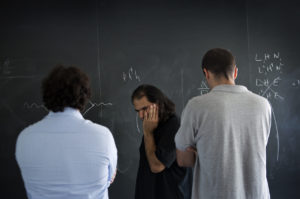
More troublingly, some researchers suspect that the Great Collider won’t provide the kind of definitive answer to the naturalness question that Arkani-Hamed is touting. Cranmer, for one, has doubts. “I am very sympathetic to the idea that this is a critical point in the field and that naturalness/fine-tuning is a deep issue,” he wrote in an email. “However, I’m not convinced that if we built a 100-TeV collider and saw nothing that it would be conclusive evidence that nature is fine-tuned.” There would remain the nagging possibility that a natural completion of the Standard Model exists that a collider simply can’t access. (Arkani-Hamed and collaborators proposed one such scenario this summer, dubbed “Nnaturalness,” which is testable in other ways.) Adam Falkowski, a particle physicist in Paris who blogs about developments in the field, argues that if no new particles are found at 100 TeV, this will leave physicists exactly where they are now in their search for a more complete theory of nature — clueless. “There is currently no indication that this collider will help us solve any of the puzzles in particle physics or cosmology,” he said.
The most prominent opponent of the collider project is the Nobel laureate C.N. Yang, a well-known, 93-year-old physicist whose work has significantly impacted particle physics, but who considers condensed matter physics (which concerns the behavior of materials) much more beneficial to society. Yang’s views do not appear publicly in writing, but Han described them as publicly known and an obstacle to the campaign.
Many particle physicists want a next-generation collider because it would guarantee thousands of jobs and a future for the field. And Gross, who considers naturalness a murky concept, simply wants a last-ditch search for new physics. “We need more hints from nature,” he said. “She’s got to tell us where to go.”
According to Han, the deliberation process in China is opaque, but he has heard encouraging news trickling down, and Chinese particle physicists are proceeding with their planning.
If China backs out, Arkani-Hamed will throw his full weight behind a parallel (if slower-paced) collider campaign at Europe’s CERN laboratory, which houses the LHC. Michelangelo Mangano, a particle theorist at CERN who is involved in assessing the options there, suggested that both projects might get off the ground. “If China goes ahead with their primary goal of the [Higgs factory], a possible scenario is one in which CERN points directly to the 100 TeV collider, and China uses their experience with their first project to then move on to something even more ambitious than 100 TeV.”
Or there might be no next-generation collider. “This hit me really hard at a certain point,” said Joe Incandela, a leading particle physicist at the LHC who supports both the European and the Chinese collider campaigns. Once the world stops building colliders, he said, the partnerships and collective xpertise needed to do so will vanish within a generation. “The results that we have are going to have o stand for millennia, perhaps. … And boy, to stop and leave those questions open — you can see the responsibility that we feel. Nima feels this responsibility. We all feel like this can’t be the end. We’ve got to at least take it one more step.”
Beyond Space and Time
Whether a 100-TeV collider materializes or not, Arkani-Hamed’s legacy may rest on a different and potentially more important campaign. Even as he chases the question of whether the properties of the universe are natural, he is also seeking to discover what gives rise to space and time in the first place. As radical as it sounds, many physicists now think that the spatiotemporal dimensions we seem to move around in are not fundamental, but rather emerge from a deeper, truer description of reality. And in 2013, an unexpected discovery by Arkani-Hamed and his student Jaroslav Trnka offered a possible clue to what the underlying laws of nature might look like.
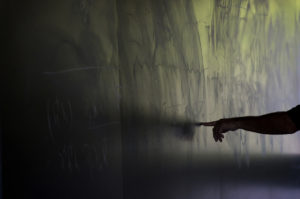
They uncovered a multifaceted geometric object whose volume encodes the outcomes of particle collisions — beastly numbers to calculate with traditional methods. The discovery suggested that the usual picture of particles interacting in space and time is obscuring something far simpler: the timeless logic of intersecting lines and planes. Although the “amplituhedron” (as Arkani-Hamed and Trnka dubbed their object) initially described a simplified version of particle physics, researchers are now working to extend its geometry to describe more realistic particle interactions and forces, including gravity. “It looks like we are going to be able to go very far,” said Zvi Bern, a leader in this research discipline at the University of California, Los Angeles. Arkani-Hamed’s own research is proceeding apace, and he freely speculates about where it will lead.
He believes that the interchangeability of points and lines in the geometry of the amplituhedron may be the origin of a mysterious mathematical duality between particles and strings, the basic building blocks of nature in string theory. And particle interactions are just “the baby version of the problem,” he said. His ultimate goal is to describe the entire cosmological history of the universe as a mathematical object. In unpublished work, he has begun finding patterns in cosmological correlations — the likelihood, for instance, that if two red stars lie 20 kiloparsecs apart, a blue star lies 50 kiloparsecs away from them both. These statistical patterns encode the history of the cosmos, like dinosaur bones buried in the sand. And as with particle collisions, he has found that these patterns can be represented as geometric volumes. Ultimately, he said, anywhere from 10 to 500 years from now, the amplituhedron and these cosmological patterns will merge and become part of a single, spectacular mathematical structure that describes the entire past, present and future of everything “in some timeless, autonomous way.”
At a recent dinner, joined by a small coterie of postdocs, Arkani-Hamed drew a pentagram on a napkin. The pentagram, like the amplituhedron, is defined by a finite set of lines crossing at a finite number of points. Arkani-Hamed darkened nine points in the configuration and explained that the first eight of these dots can be placed on a grid. But no matter how fine the grid, the ninth dot always falls between grid points; it is forced to correspond to an irrational number. There is a mathematical proof, Arkani-Hamed observed, that all algebraic numbers can be derived from configurations of a finite whole number of intersecting points and lines. And with that, he expressed a final conjecture, at the end of a long, cerebral day, before everyone else went home to bed and Arkani-Hamed headed to the airport: Everything — irrational numbers, along with particle interactions and the correlations between stars — ultimately arises from possible combinatorial arrangements of whole numbers: 1, 2, 3 and so on. They exist, he said, and so must everything else.
Arkani-Hamed considers his tendency to speculate a personal weakness. “This is not false modesty, it’s really a personal weakness, but it’s true, so there’s nothing I can do about it,” he said. “It’s important for me while I’m working on something to be very ideological about it. And then, of course, it’s also important after you are done to forget the ideology and move on to another one.” Thinking of the naturalness question, and his quest for a mathematical theory of nature, he continued, “But certainly in things where progress isn’t so immediate, I find it very important to convince myself that it’s the one true path. Or at least a true path.”
George Musser is a contributing editor at Scientific American and Nautilus magazines and the author of Spooky Action at a Distance (which also includes a profile of Arkani-Hamed and his work) and The Complete Idiot’s Guide to String Theory. He is the recipient of the 2011 American Institute of Physics Science Writing Award and the 2010 American Astronomical Society’s Jonathan Eberhart Planetary Sciences Journalism Award, and as a staff editor at Scientific American magazine for 14 years, he shared in two National Magazine Awards. Follow him on Twitter @gmusser.
You may view this story in its original format at Quanta Magazine. George Musser’s Q&A with writer Natalie Wolchover is at The Open Notebook.

